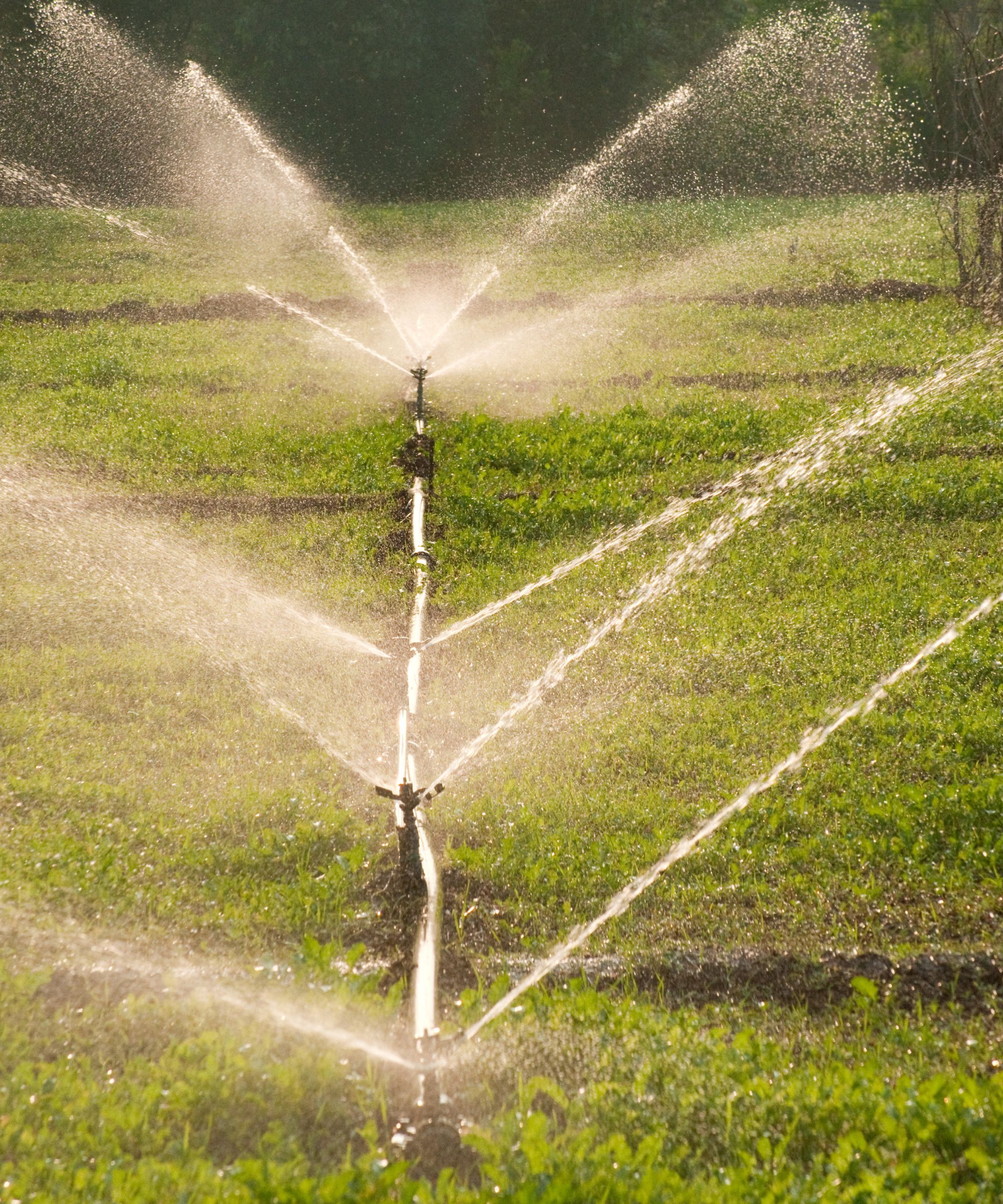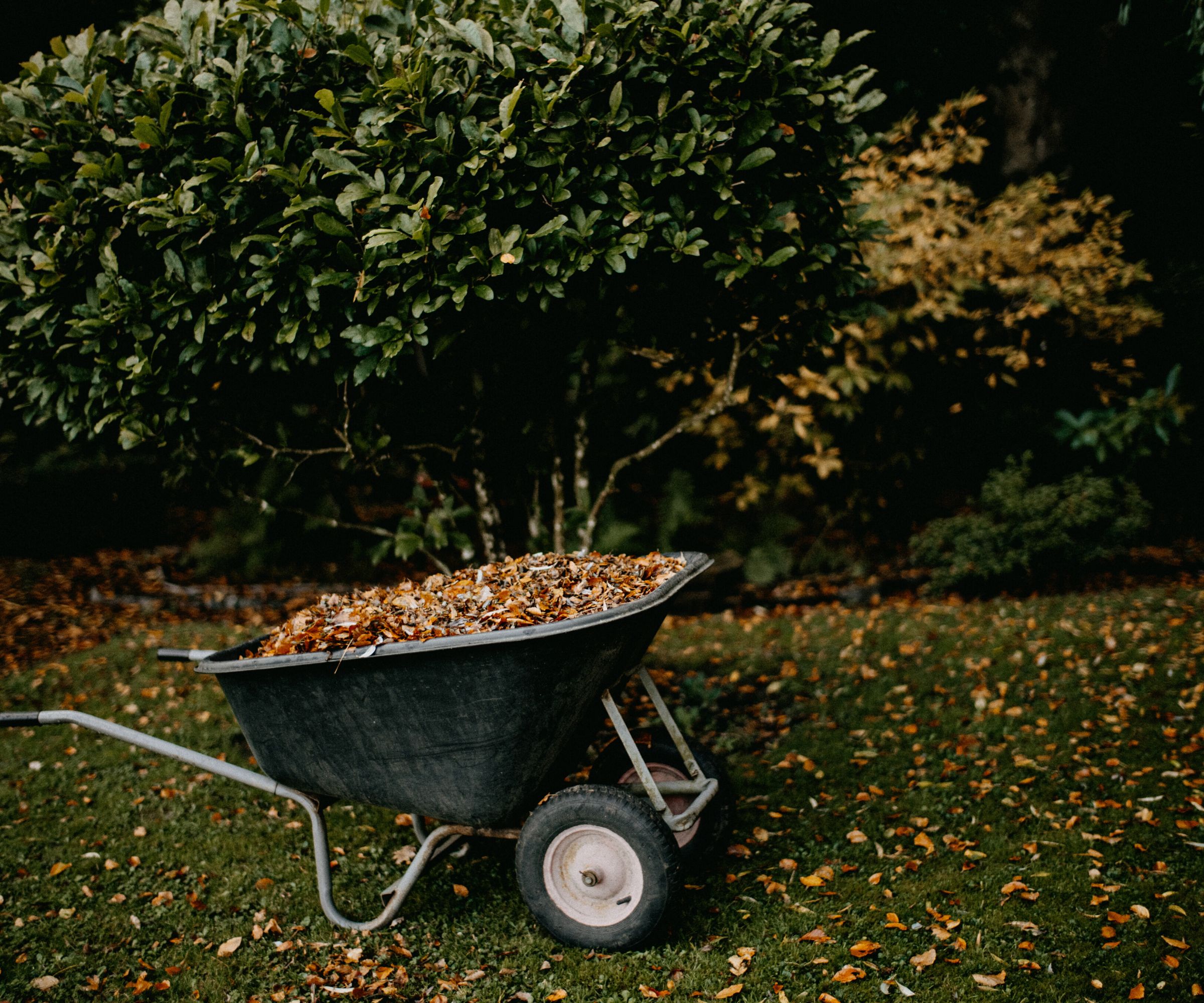How to blow out a sprinkler system – tips ahead of the cold weather
If you have sprinklers on your property, you'll be needing these experts' top tips for blowing out a sprinkler system before winter


With winter right around the corner, it is prime time to carry out the vast majority of your important lawn and garden care before the winter frosts begin. If you have an irrigation system, you may be wondering how to blow out a sprinkler system to winterize the pipes.
Although colder weather usually means spending more time indoors, fall lawn care is one of the most important tasks to undertake when preparing a home for fall and winterizing a house. If you do not blow out your sprinkler systems, you could well end up with a lot more work the following year.
Here, we talk to experts to find out how to blow out a sprinkler system in the fall, and why this care task is vital to protecting your pipes.
How to blow out a sprinkler system

Given that winter lawn care rarely includes regular watering and as the gardening season winds down for the year, it is good to practice clearing out the sprinkler lines in your backyard ideas before yearly frosts cause damage.
‘For your irrigation system to cope with freezing conditions, it is vital to decommission your system correctly before the first freeze of winter,’ explains Sean Lade, director of Easy Garden Irrigation. ‘If you don’t properly dry out your irrigation system, the pipes, sprinklers, and other components that still have water in them can freeze and crack, leaving a nasty surprise for when you come to use your system the following spring.’
While it is possible to hire an irrigation expert to blow out your sprinkler system for you, it is possible to do it yourself so long as you have the right equipment.
‘If you have drain valves installed for each of your sprinkler zones, then you’re in luck,’ Sean says, ‘it’s going to be as easy as shutting off the water supply to the irrigation system and then opening the drain valves to release the excess water. Leave these valves open for a few days to be sure all the water has escaped, then close them again to stop any creepy crawlies from getting into the irrigation system,’ he explains.
Design expertise in your inbox – from inspiring decorating ideas and beautiful celebrity homes to practical gardening advice and shopping round-ups.

‘If you do not have drain valves installed, never fear; you can use a compressor to blow out the lines of the sprinkler system to remove all the excess water,’ sean continues. ‘The blow-out method uses controlled compressed air to clear out water in the pipes and sprinkler heads to prevent damage to the system freezing conditions.
‘To effectively blow out the lines of your irrigation system, you will want to use a compressor that can handle at least 25 cubic feet per minute (cfm),’ explains Sean. ‘You may need a larger-capacity compressor if you have large sprinkler zones. You will also need the compressor to adjust the pressure to 50 psi or less to avoid damage to the sprinkler system.
It is worth noting that most small shop air compressors will not be powerful enough to achieve what you require,’ he warns.
'Follow the steps below to blow out your irrigation system correctly.'
- 'Shut off the main water supply to the irrigation system and check for any components that may be sensitive to high pressure; remove any sensitive equipment, such as a flow meter, from the line or bypass them.
- Connect the air compressor hose to an appropriate air fitting located down from the irrigation supply valve. If you haven’t installed a connection point, install a tee fitting just after the main line. Put a threaded nipple and cap on the extra leg, and use it to connect to the air hose. If your backflow preventer is installed on the main line, be sure you make the connection just after it.
- Activate each automatic valve manually from the controller. Blow out each zone valve until all the water is expelled. It is best to introduce air into the system gradually; do not attempt to fully charge the holding tank of the compressor as this can damage components in your irrigation system. A tip is to blow out the sprinkler zones in 2-3 short cycles rather than one long cycle. You do not want to needlessly blow dry air through the system as the friction can heat the pipes and components and cause damage.
- Disconnect the air hose and reinstall a plug. Open any installed drain valves between the main shutoff and the valve manifolds.'
'Blow out the sprinkler zones in two to three short cycles rather than one long cycle,' Sean adds. 'You do not want to needlessly blow dry air through the system as the friction can heat the pipes and components and cause damage. Make sure you have at least one valve open when running the air compressor.
'For safety, do not stand over any component parts while the system is filled with air.'
Why you should blow out a sprinkler system

'With the colder weather here, it’s important to begin preparing your garden for the winter months, which includes storing away your watering equipment, such as spray guns, hoses, and sprinklers,' explains Hozelock’s head of marketing, Chris Hodges. 'When it comes to your sprinkler, it’s important to winterize the sprinkler system to ensure it runs smoothly when you come to use it again next spring. This is a relatively simple task that you can carry out yourself, which involves putting in a drain point or taking off a sprinkler at the lowest point or points and disconnecting from the tap.'
Do you really need to blow out a sprinkler system?
If you have a sprinkler or irrigation system you should winterize the pipes every year by blowing them out. If water is left in the pipes over winter in areas where air and/or ground temperatures drop below freezing it may expand and crack the pipes, rendering your system useless the following spring.
When should you blow out sprinkler lines?
The best time to blow out sprinkler lines is before the first frost of the year as part of winterizing your lawn in fall. To avoid leaving winterizing too late, make blowing out your sprinkler system one of you first fall garden tasks of the year.

Chiana has been at Homes & Gardens for two years and is our resident 'queen' of non-toxic living. She spends most of her time producing content for the Solved section of the website, helping readers get the most out of their homes through clever decluttering, cleaning, and tidying tips. She was named one of Fixr's top home improvement journalists in 2024.